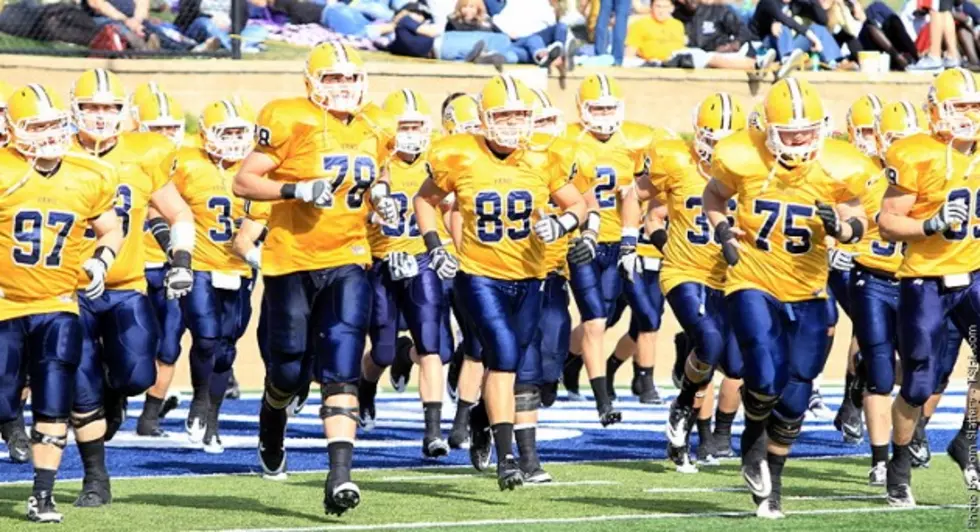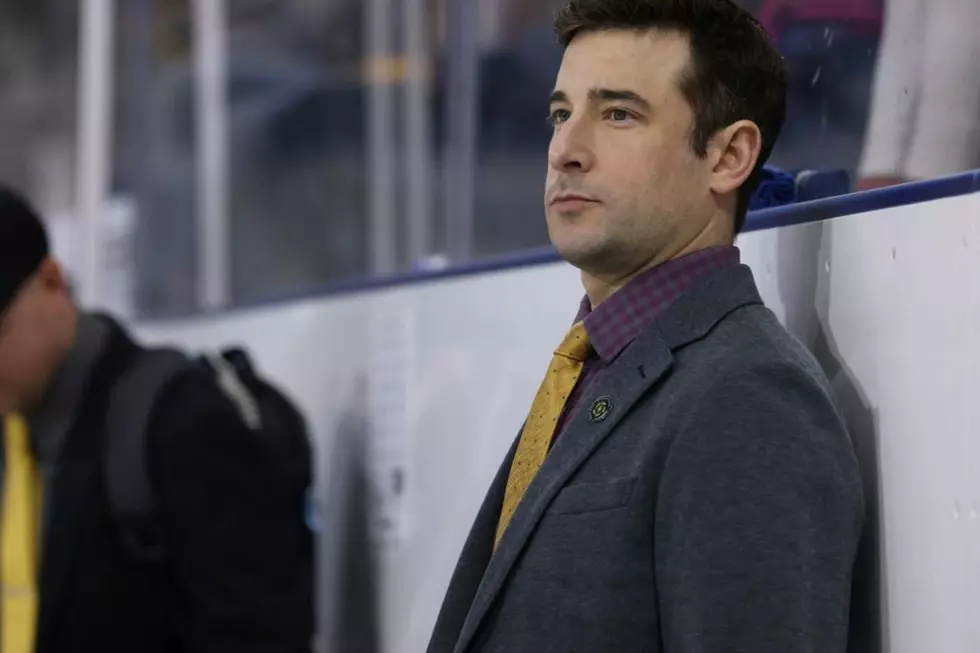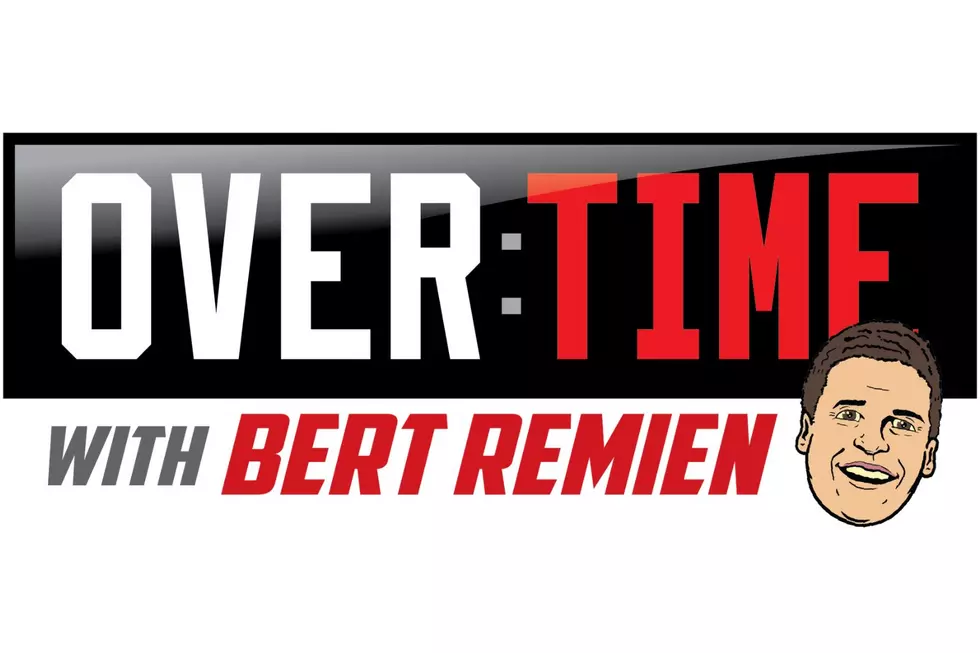
Part 2: Concussions in Football – High School, College Coaches React
"The bottom line is the concern is warranted. The brain is critical, and it takes time to recover. There's no do-overs when you mess up your brain," says Executive Director of the National Institute for Athletic Health and Performance Michael Bergeron, Ph.D.
When monitoring player safety and health at any level, coaches are some of the most important people on the sidelines. Coaches have to be sensitive and aware that at any moment a player could become injured, and they need to take the necessary steps to protect their teams.
At the high school and collegiate level in Sioux Falls, coaches do understand the protocol among concussions, and how they can impact a player's short and long-term health.
At USF, head coach Jed Stugart and the university's training staff have players go through testing at the beginning of the year, and in season, they monitor concussions very cautiously.
"At start of year, players get a baseline test, and impact test. If they cannot pass the test, they do some jogging, and have to take tests again to make sure once they run around, their symptoms don't come back. Usually there's always a mandatory seven-day period."
USF has cut down on the amount of live activity in practice to avoid circumstances that may lead to head-to-head contact as well.
Augustana has had about 16 concussions at the time of this interview in early November. Head coach Jerry Olszewski says his coaching staff teaches tackling techniques to avoid concussions, but it can be difficult because concussions aren't always caused by blows to the head."Concussions can be caused by whiplash, with the helmet on the ground, and by taking a helmet to the knee."
Football is physical, and the reality of the game is that players like to deliver those bone-crunching, spine-tingling tackles. Head athletic trainer and strength/conditioning coach Zach Mathers at USF thinks that players today are beginning to understand the effects of those big hits.
"By the time you get to the college level, you've gotten through teach tackling techniques. There's was a period of time that everyone was focused on getting the big hit, but that group of athlete's is kind of working their way out where they're are seeing the results of teaching tackling in younger grades. I think our guys tackle very safely with their head up. Our defense does tackling circuits during fall camp every day, and once season starts, once a week, or once every two weeks, we are looking at how we tackle, teaching to get hips down, and heads up."
USF also spends ten minutes every day out of an hour and half practice working on players tackling correctly. From the coaching perspective, USF has educational meetings on concussions in the preseason. They teach what a concussion is, what the long-term effects are, and what happens if a player gets a second concussion. Mathers noted that the players are more apt to hide the concussions than coaches. "We dealt with one that knew he shouldn't of said anything, but we would have found it anyway by coaches noticing some things. They want players to be in meetings, but understand if players can't, they go with the trainers."
To avoid the big hits, and the head-to-head contact, the NCAA created a new targeting rule that has been initiated on the gridiron by college football in 2013. Targeting states that "no player shall target and initiate contact vs. opponent with the crown of his helmet or no player shall target and initiate contact to the head or neck area of a defenseless opponent."
All targeting penalties are worthy of a 15-yard penalty and ejection.
At the high school level, coaches haven't had the benefit of the NCAA's new targeting rule, but the awareness for concussions on and off the field is just as greater. To help raise the awareness, Sanford Hospital and the Minnesota Vikings partnered to promote a new concussion technology application from X-2 Biosystems. Sanford Hospital asked athletic trainers in high schools in North Dakota, South Dakota and Minnesota to to complete a concussion awareness survey to discuss what they do to manage and assess concussions at their schools. Completing the survey made the high schools eligible to receive an iPad that has a concussion management tool, called the X-2 Ice application. This new technology provides a cloud based data storage of an athlete's prior examinations that allows real-time comparisons when a player has a suspected concussion.The new X-2 Ice application is used by all 32 NFL teams.
As a grand-prize winner, Lincoln High School in Sioux Falls was awarded with a trip from Vikings players Toby Gerhart and Josh Robinson to the Sanford Fieldhouse, as well as tickets to a game in December. Eight total high schools received the X-2 Ice application for an iPad that is now on sidelines across the region.
The involvement between Sanford Hospital and the Vikings shows that their teams care for their player's safety and heath since coaches and athletic trainers had to send in their concussion surveys. "Their medical staff and coaches care about this issue about player safety and concussions. They took the time to recognize and take advantage of the tools of the sideline management application," says Associate Director Thayne Munce. PhD, National Institute for Athletic Health and Performance. "Having this tool in their hands will insure that player safety is at the highest level within high school sports. It tells the parents, players and communities that their high school staff are doing everything they can to help keep their players healthy and safe."
Safety is regarded at the highest level in college and in high school, and not only are their more ways to recognize concussions, but high school teams are becoming more precautional by making baseline tests the norm at the start of each year. Roosevelt High School offers baseline tests and has found other new approaches to help avoid some of the concussions."We have our players strengthen their neck in the weight room, we don't hit live in practice, and we've been lucky to not have a serious concussion," says Roosevelt head coach Kim Nelson.
Most Sioux Falls schools and local area hospitals have training staff at games from Sanford Hospital, and when coaches and trainers see symptoms of concussions, they are very alert and conscientious of each situation.
"When a kid shows signs of headaches, they are done for the game. Kids take tests, and re-take the tests when the symptoms are gone," says Brandon Valley head coach Chad Garrow.
When it comes to the future of the game, players are getting faster and stronger, as well as the equipment and technology. Most of the coaches agree that the game will continue to improve as the players do.
"The equipment is getting better, and the players are getting faster and stronger. There's more concussions I'd say because they are better diagnosed, and the speed of the game makes a difference," adds Garrow.
At the same time, there is only so much for the game to improve, notes a few coaches.
"I hope the concussion issue comes to rest because I worry the game might go away. The game offers too many positives. It teaches teamwork, preparation, practice, and it offers a reflection on how to live life. We have to try to find ways to make game better. Football is the ultimate team sport," reflects Nelson.
The nature of the game is a violent sport, and as fans want to see big hits, they don't want to see players get hurt. Stugart and Olszewski say there's is only so many rules that can be added to football.
"There's a lot of extreme measures of taking certain things out, i.e. kickoffs, kickoff returns," says Stugart, who instead thinks manufacturing companies need to find new designs through helmets to keep up with the size and speed of football players.
Olszewski agrees, and believes that the NCAA and NFL have already addressed most of the rule changes. "I don't know how much they can do, or what they can do. You can't go to the box and cut, and you can't attack the shoulders or hit high and low. There's no changes imminent, and I think they will review targeting."
With the high school football season officially over and the collegiate season wrapping up for others in South Dakota and around the country, health and safety will be continue to be a hot topic in the offseason. The NCAA will likely address the new targeting rule, and will have to look at lawsuits that have been filed by players regarding the issue. Recently, three players, former University of Minnesota linebacker Joey Balthazor, and former Vanderbilt players Paul Morgan and Cliff Deese, claimed the NCAA did not inform them about the inherent risk of concussions in football.
This issue is under a lot of scrutiny, but there is a lot of hard work being done by coaches, athletic trainers and the medical community to protect it's players. Stay tuned again in the coming weeks to find out some of the concerns that parents have with their children playing football, to hear from a former football player on his experience, and for a informational medical standpoint on concussions.
More From KSOO-AM / ESPN Sioux Falls









